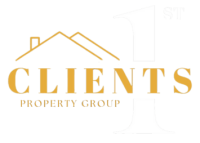Successful real estate investors rely on precise metrics to gauge performance. One critical tool is the cash-on-cash return, which measures annual cash flow relative to the initial investment. This metric helps determine whether a property generates sufficient income to justify its costs.

The calculation divides pre-tax cash flow by total cash invested, expressed as a percentage. For example, a property generating $12,000 yearly income with a $150,000 investment yields an 8% return. This straightforward formula reveals how efficiently capital generates passive income.
Regional market dynamics significantly influence ideal returns. Clients 1st Property Group, a Charlotte-based investment firm, notes that location-specific factors like rental demand and property taxes impact outcomes. Their analysis of Southeastern U.S. markets shows how targeted strategies boost profitability.
This guide breaks down the formula, compares it to other metrics like cap rates, and shares actionable case studies. Data from the National Association of Realtors® and Federal Reserve Economic Data (FRED) ensures reliable benchmarks for decision-making.
Key Takeaways
- Cash-on-cash return evaluates annual income against upfront investment
- Pre-tax cash flow calculations provide clarity on operational performance
- Market-specific expertise improves return optimization strategies
- Comparative metrics help contextualize results across property types
- Regional data analysis informs realistic expectations for investors
Introduction to Cash on Cash Return
Understanding investment efficiency starts with measuring key financial indicators. Cash-on-cash return stands out as a vital metric for property investors, showing how effectively upfront capital generates income before taxes.
Defining the Concept
This metric compares annual cash flow to total cash invested, offering a percentage-based snapshot of profitability. For instance, if a rental property produces $10,000 yearly income against a $125,000 investment, the return is 8%. Clients 1st Property Group emphasizes this calculation in their Charlotte-based analyses, noting how local factors like maintenance costs and tenant demand shape outcomes.
Why This Metric Matters for Real Estate Investors
Investors use this percentage to compare opportunities across residential, commercial, or multifamily properties. It highlights whether a deal aligns with financial goals without relying solely on long-term appreciation. Unlike cap rate, which evaluates a property’s value, cash-on-cash focuses on the investor’s actual out-of-pocket expenses.
Balancing debt and equity becomes clearer when you see how borrowed funds affect returns. For example, leveraging a mortgage might reduce initial cash invested while boosting percentage yields. Pairing this metric with others like net operating income creates a comprehensive view of investment health.
Later sections will explore step-by-step calculations and regional benchmarks from trusted sources like FRED. These insights help investors refine strategies for stronger cash flow and sustainable growth.
Understanding the Core Formula
Property investors require precise financial tools to assess profitability effectively. The cash-on-cash formula acts like a financial microscope, revealing how efficiently capital generates income. Clients 1st Property Group stresses that accurate record-keeping forms the foundation of reliable calculations.
Annual Cash Flow and Net Operating Income
Net operating income (NOI) starts the calculation. Subtract operating expenses like maintenance and property taxes from total rental income. For example, a Charlotte duplex earning $60,000 annually with $15,000 in expenses yields $45,000 NOI.
| Component | Calculation | Example |
|---|---|---|
| Gross Income | Rent + Other Income | $60,000 |
| Operating Expenses | Taxes + Maintenance + Insurance | $15,000 |
| NOI | Gross Income – Expenses | $45,000 |
Total Cash Invested Explained
This figure includes all upfront costs needed to make the property operational. A $400,000 commercial space might require:
- $100,000 down payment
- $12,000 closing costs
- $28,000 renovation budget
Using these numbers, total cash invested equals $140,000. Divide the annual pre-tax cash flow ($45,000 NOI – $30,000 mortgage payments) by this amount to get a 10.7% return. Regional specialists like Clients 1st Property Group verify that detailed expense tracking prevents calculation errors that distort results.
Breaking Down the Calculation Process
Mastering property analysis requires methodical evaluation of financial inputs. Let’s explore how to transform raw data into actionable insights using the cash-on-cash formula.
Step-by-Step Formula Explanation
Follow this sequence to calculate returns accurately:
- Determine annual gross rental income (e.g., $36,000 for a $3,000/month property)
- Subtract operating costs: taxes ($4,200), insurance ($1,800), maintenance ($2,400)
- Calculate net operating income: $36,000 – $8,400 = $27,600
- Account for mortgage payments: $18,000/year
- Divide remaining cash flow ($9,600) by total invested capital ($120,000)
This yields an 8% return. Clients 1st Property Group notes that even 5% discrepancies in expense tracking can alter results by 1-2 percentage points.
| Component | Residential Example | Commercial Example |
|---|---|---|
| Gross Income | $48,000 | $162,000 |
| Debt Service | $24,000 | $72,000 |
| Cash Flow | $12,000 | $45,000 |
Common Adjustments and Considerations
Real-world calculations often require refinements:
- Vacancy rates (5-8% depending on location)
- Emergency repair reserves ($500-$2,000/year)
- Tax-deductible improvements (roof replacements, HVAC upgrades)
A Charlotte triplex generating $42,000 income needed $7,500 in unexpected repairs. Factoring this reduced its return from 9.3% to 7.8%. “Consistent expense monitoring separates theoretical returns from actual performance,” advises Clients 1st Property Group analysts.
Investors should update figures quarterly using property management software. Small changes in rental rates or maintenance costs create ripple effects in final percentages.
Evaluating What is a Good Cash on Cash Return
Real estate profitability hinges on comparing actual returns to market standards. Industry research shows most investors target 8-12% annual yields, though regional variations exist. Clients 1st Property Group’s Charlotte market reports reveal how localized trends shape these expectations.
Benchmarks in the Real Estate Market
Multifamily properties in growing Southeastern cities often outperform national averages. Consider these regional comparisons from 2023 data:
| Region | Avg. Return | Key Driver |
|---|---|---|
| Southeast | 9.2% | Population growth |
| Midwest | 7.8% | Lower acquisition costs |
| West Coast | 10.4% | High rental demand |
These figures assume standard one-year measurement periods. Commercial properties typically show 1-3% higher returns than residential units due to longer lease terms.
Factors that Affect Return Rates
Four elements frequently alter outcomes:
- Location-specific taxes and regulations
- Property age and maintenance requirements
- Financing terms (e.g., 15-year vs. 30-year loans)
- Unexpected vacancies or repairs
A Charlotte duplex purchased for $275,000 demonstrates this interplay. With $22,000 annual income and $8,400 in expenses, it yields 11.2% before accounting for a $5,000 roof replacement. This single expense drops the return to 8.9% – still strong, but below initial projections.
Investors should analyze both short-term yields and long-term potential. While 12% returns attract attention, stable 6-7% properties often carry lower risks. Regular expense tracking and market comparisons help maintain realistic expectations.
Cash on Cash Return vs. Other Investment Metrics
Investors navigate multiple financial indicators to assess property performance. While cash-on-cash provides immediate income clarity, combining it with other metrics reveals deeper insights into equity growth and long-term viability.
Comparing to Cap Rate
Cap rate evaluates a property’s value relative to its net operating income, ignoring financing. For example, a $500,000 Charlotte duplex generating $40,000 NOI has an 8% cap rate. Cash-on-cash return factors mortgage payments and upfront costs, showing how leverage impacts returns.
Contrasting with Internal Rate of Return (IRR)
IRR accounts for the time value of money across an investment’s lifespan. Consider a 5-year commercial project requiring $200,000 equity:
- Year 1-4: $15,000 annual cash flow
- Year 5: $250,000 sale proceeds
This scenario might yield a 14% IRR but only 7.5% cash-on-cash in year one. Clients 1st Property Group notes that IRR better reflects multi-year strategies, while cash-on-cash suits shorter-term income analysis.
| Metric | Focus | Time Frame |
|---|---|---|
| Cash-on-Cash | Initial investment yield | Annual |
| Cap Rate | Property value | Current |
| IRR | Total returns | Project lifespan |
Market conditions dictate which metric matters most. High-growth areas favor IRR for appreciation potential, while stable markets prioritize consistent cash-on-cash yields. Mortgage terms and business objectives further influence which tool investors emphasize.
Real Life Examples and Case Studies
Practical applications reveal how financial strategies translate into measurable results. Let’s examine scenarios where calculated decisions directly influenced profitability metrics.

Case Study: Leveraging Debt and Equity
A Charlotte investor purchased a $400,000 multifamily property with a 25% down payment ($100,000). Operating expenses totaled $15,000 annually, while mortgage payments consumed $18,000 of the $54,000 gross income. This left $21,000 pre-tax cash flow.
| Component | Amount |
|---|---|
| Total Cash Invested | $118,000 (down payment + closing costs) |
| Annual Cash Flow | $21,000 |
| Return | 17.8% |
By contrast, a 50% equity approach reduced mortgage payments to $12,000 but required $210,000 upfront. Though cash flow rose to $27,000, the return dropped to 12.9%. Clients 1st Property Group notes this demonstrates how strategic debt use amplifies percentage yields.
Example Calculations for Rental Properties
Consider a single-family home generating $30,000 annual rent:
- Operating costs: $7,200 (taxes, insurance, maintenance)
- Mortgage: $14,400/year
- Cash flow: $8,400
With $120,000 invested, the return is 7%. If renovations reduce vacancy rates and boost rent to $33,600, cash flow jumps to $12,000 – a 10% yield. “Small operational improvements often create disproportionate gains,” states a Clients 1st analyst.
Key lessons emerge:
- Debt structure significantly impacts short-term metrics
- Regular expense reviews prevent erosion of returns
- Local market conditions dictate achievable amounts
Tips for Maximizing Your Cash Flow
Strategic cash flow management separates thriving properties from underperforming assets. Small operational tweaks and financial adjustments often yield measurable improvements in annual returns. Let’s explore proven methods used by seasoned professionals to enhance profitability.

Managing Operating Expenses
Regular maintenance prevents costly emergency repairs. A leaking roof left unchecked can drain $5,000-$10,000 from annual profits. Clients 1st Property Group recommends quarterly property inspections to identify issues early.
Renegotiate vendor contracts annually. Landscaping and cleaning services often offer discounts for long-term commitments. One Charlotte investor saved 18% on pool maintenance by switching to bulk billing.
Track every expense using digital tools. Property management software flags irregular spending patterns, like sudden increases in water bills indicating leaks. These practices helped a local multifamily portfolio boost returns by 2.3% in six months.
Optimizing Financing Strategies
Interest rate variations significantly impact long-term yields. Compare multiple lenders to secure terms below market averages. A 0.25% rate reduction on a $300,000 loan saves $720 annually.
Balance debt and equity based on market conditions. Consider this comparison for a $500,000 commercial property:
| Financing Mix | Cash Invested | Annual Cash Flow | Return |
|---|---|---|---|
| 30% Down | $150,000 | $22,500 | 15% |
| 50% Down | $250,000 | $30,000 | 12% |
Refinance when equity reaches 30-40% to access better rates. Clients 1st analysts recently helped an investor lower monthly payments by $380 through strategic loan restructuring. These techniques create compounding benefits over time.
Real Estate Investment Strategies in Today’s Market
Market shifts demand fresh approaches to maximize rental property performance. Rising interest rates and evolving tenant preferences require investors to adapt strategies for stronger cash cash returns. Recent Federal Reserve data shows 18% of U.S. investors adjusted portfolios in 2023 to address these changes.

Current Trends in the United States
Urban migration patterns now favor secondary cities with lower living costs. Charlotte saw a 14% year-over-year rent increase as remote workers sought affordable hubs. This trend creates opportunities for real estate investing in multifamily units and renovated single-family homes.
Financing conditions remain pivotal. The National Association of Realtors® reports 30-year mortgage rates stabilizing near 6.7%, encouraging strategic refinancing. Investors using adjustable-rate loans gain flexibility while preserving cash flow.
| Region | Rent Growth | Vacancy Rate |
|---|---|---|
| Southeast | 12% | 5.2% |
| Midwest | 8% | 6.8% |
| West | 9% | 4.1% |
Insights from Clients 1st Property Group
Charlotte’s market thrives on tech sector expansion and infrastructure upgrades. “Properties near light rail stations deliver 22% higher returns than city averages,” notes a Clients 1st analyst. Their team helped investors convert outdated office spaces into mixed-use rentals, boosting yields from 7% to 11%.
Practical adjustments make measurable impacts:
- Implementing dynamic pricing tools for rental properties
- Renegotiating property tax assessments annually
- Partnering with local employers for tenant referrals
For personalized strategies, contact Clients 1st Property Group at (704) 622-4865. Their Charlotte-based experts provide hyperlocal market analysis to navigate today’s complex conditions. Staying informed ensures investors capitalize on emerging opportunities while safeguarding returns.
Conclusion
Navigating real estate profitability requires a solid grasp of performance indicators. This guide has demonstrated how calculating annual cash flow against initial investment reveals a property’s true earning potential. Through formula breakdowns and regional benchmarks, estate investors gain tools to evaluate opportunities objectively.
Key insights emerge when comparing metrics like cap rates and IRR. Strategic debt use amplifies rate return percentages, while detailed tracking of operating expenses prevents profit erosion. Charlotte case studies showcased how minor adjustments – from vacancy rate management to financing tweaks – create measurable impacts within one year.
Local expertise remains invaluable for optimizing results. Clients 1st Property Group’s Charlotte-based analysts emphasize balancing short-term yields with long-term growth potential. Their data-driven approach helps investors avoid common pitfalls while maximizing equity-building strategies.
Ready to refine your portfolio? Assess properties using the methodologies outlined here, then contact Clients 1st Property Group at (704) 622-4865. Their team provides hyperlocal insights to turn financial metrics into actionable plans. Remember: informed decisions grounded in clear calculations drive sustainable success for estate investors nationwide.



